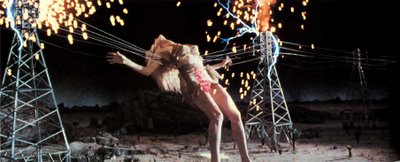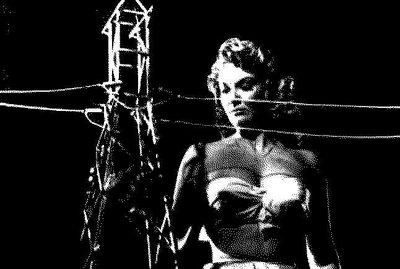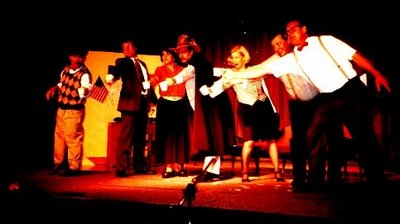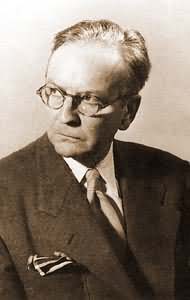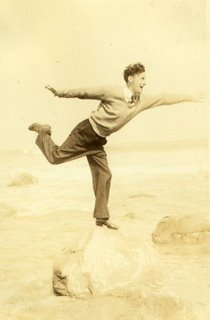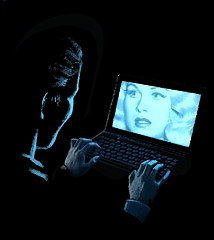Mangoes

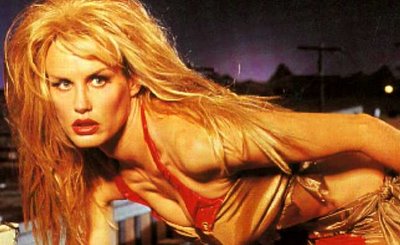
I think this has something to do with the great circular dance of the universe, but I’m not absolutely sure. I do know it starts with a confession: When I was seven years old I was frightened out of the Westbury Theater by a resoundingly unfrightening movie. The film that drove me out into the sun about a minute after the credits was Attack of the 50 Ft. Woman, starring Allison Hayes and the vivacious Yvette Vickers. If I could have made it another minute into the movie I probably would have been all right, but I was seven and the sight of this large, glowing, almost opaque weather balloon of a space ship dropping down in front of the soon-to-be titular character was enough to send me running.
I caught up with the rest of Attack of the 50 Ft. Woman when it joined the regular rotation on a local TV channel’s Chiller Theater a few years later. It was then I learned how steadfastly non-horrifying it was as a movie. But still it fascinated me. There was something about a fifty foot Allison Hayes in a bed-sheet bikini walking through those bad composites, picking up obvious dolls, and ripping up the balsa wood ceiling of a tavern to grab her two-timing husband that got to me in a prepubescent, preintellectual way. But I was years from understanding the full impact this movie, made for $65,000 in eight days, was to have on me.
It wasn’t until 1988 that I decided to sit down and write my remake of Attack of the 50 Ft. Woman. I wanted to honor this strange little film with its James M. Cain meets The Amazing Colossal Man plot. I wanted to acknowledge the great, albeit not completely understandable, pleasure it had given me.
It took five years of blank stares, but I finally talked somebody into making the movie. In acquiring the rights to remake the picture I learned a little more about the man who wrote it. His name is Mark Hanna and you can find his name on some of the most distinctive low-budget movies of the late fifties. According to the Writers Guild his last credit was in 1972.
Because the movies Mark Hanna wrote were made quickly, instinctively, almost reflexively, they have more energy than any ten pictures made today. They’re more fun. They have a sense of joy you just don’t find at the multi-plex anymore.
A few months after my version of 50 Ft. Woman premiered on HBO, a letter was forwarded to me from Florida. I looked at the return address and saw it was from Mark Hanna.
He was writing to tell me he liked the remake. We started to correspond, spoke a few times on the phone, and met once at DuPar’s in Studio City where I got him to sign a version of the original poster to me and I signed a poster of my movie for him. We talked about writing, about how cheap Roger Corman was, about how he made the deal to write Attack of the 50 Ft. Woman with the Woolner Brothers in Schwab’s Drugstore.
Mark Hanna had a mango tree in his yard in Florida. Every summer he took mangoes from his tree, wrapped them in pages of the local newspaper, set them in cardboard boxes and sent fruit to his friends. I’ve received many a box of mangoes from Mark Hanna.
In 1958 I was scared out of a theater by a movie I would remake more than thirty years later, and then I get fruit from the man who wrote the original picture.
So you see why I think this is about the great circular dance of the universe, how things are stitched together in ways and to purposes we can’t quite comprehend, but I’m not absolutely sure. Maybe this is as sure as I’m supposed to get.
Mark Hanna died in October of 2003. He was eighty-six-years old.
The universe doesn’t let us in on the big picture, but if we pay attention we can pick up the clues that indicate we’re on the right path. If we stay balanced we can feel those little shifts in the magnetic field that help guide us to do the work we’re supposed to do.
I do know that when I felt the weight of one of those fresh mangoes in my hand, the universe didn’t make any more sense, but it did feel kind of right.
